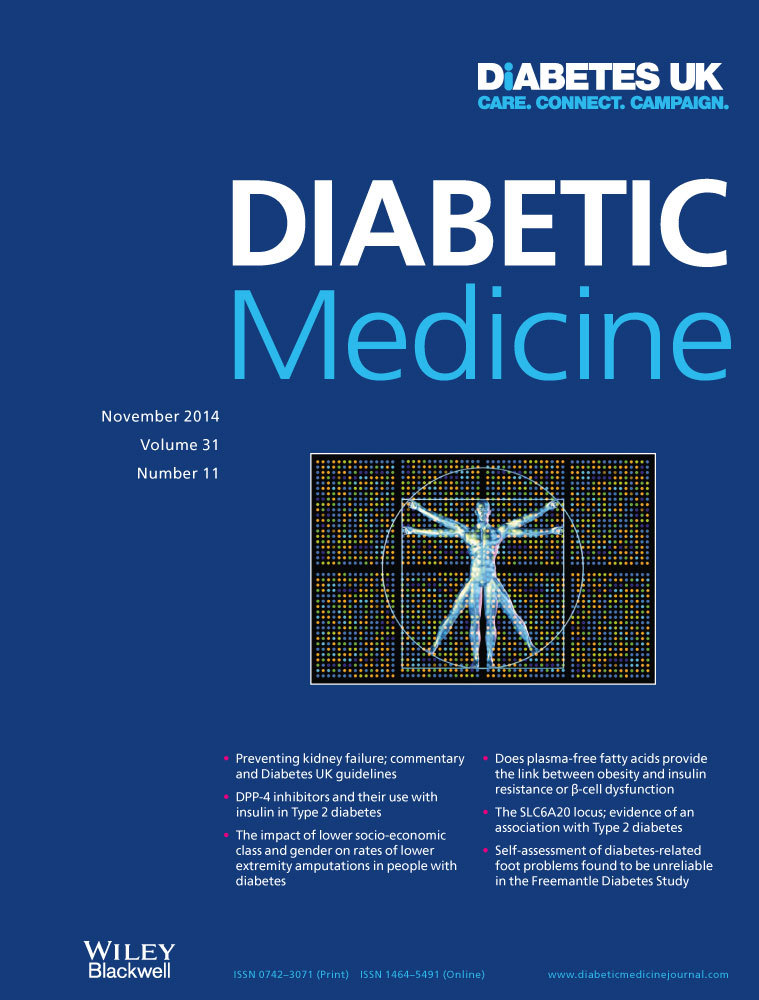Gender differences in the impact of poverty on health: disparities in risk of diabetes-related amputation
Abstract
Aims
To assess the combined impact of socio-economic status and gender on the risk of diabetes-related lower extremity amputation within a universal healthcare system.
Methods
We conducted a population-based cohort study using administrative health databases from Ontario, Canada. Adults with pre-existing or newly diagnosed diabetes (N = 606 494) were included and the incidence of lower extremity amputation was assessed for the period 1 April 2002 to 31 March 2009. Socio-economic status was based on neighbourhood-level income groups, assigned to individuals using the Canadian Census and their postal code of residence.
Results
Low socio-economic status was associated with a significantly higher incidence of lower extremity amputation (27.0 vs 19.3 per 10,000 person-years in the lowest (Q1) vs the highest (Q5) socio-economic status quintile. This relationship persisted after adjusting for primary care use, region of residence and comorbidity, and was greater among men (adjusted Q1:Q5 hazard ratio 1.41, 95% CI 1.30–1.54; P < 0.0001 for all male gender–socio-economic status interactions) than women (hazard ratio 1.20, 95% CI 1.06–1.36). Overall, the incidence of lower extremity amputation was higher among men than women (hazard ratio for men vs women: 1.87, 95% CI 1.79–1.96), with the greatest disparity between men in the lowest socio-economic status category and women in the highest (hazard ratio 2.39, 95% CI 2.06–2.77 and hazard ratio 2.30, 95% CI 1.97–2.68, for major and minor amputation, respectively).
Conclusions
Despite universal access to hospital and physician care, we found marked socio-economic status and gender disparities in the risk of lower extremity amputation among patients with diabetes. Men living in low-income neighbourhoods were at greatest risk.




